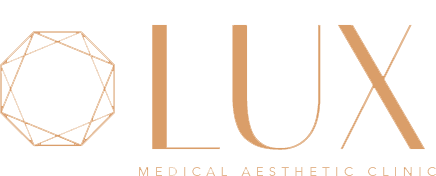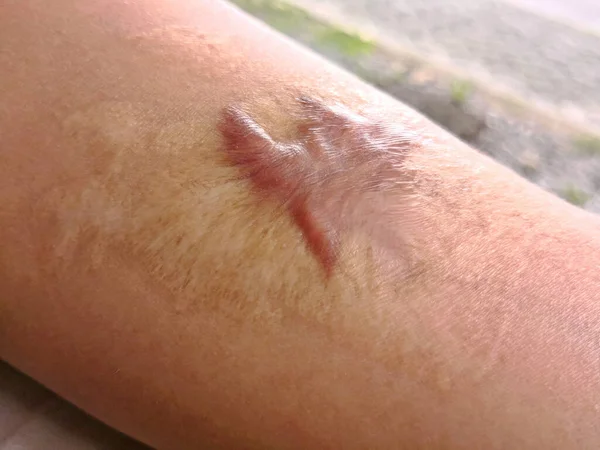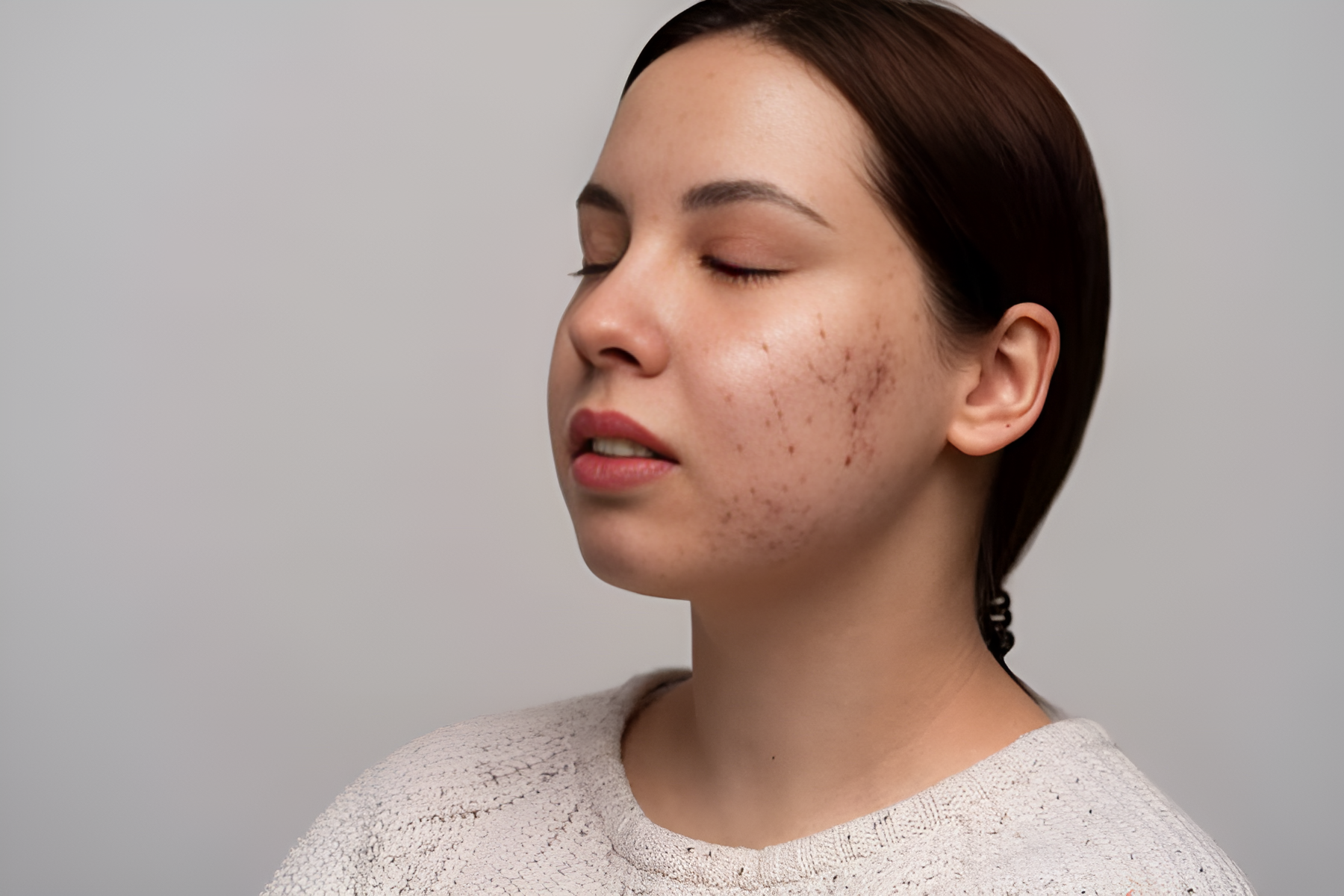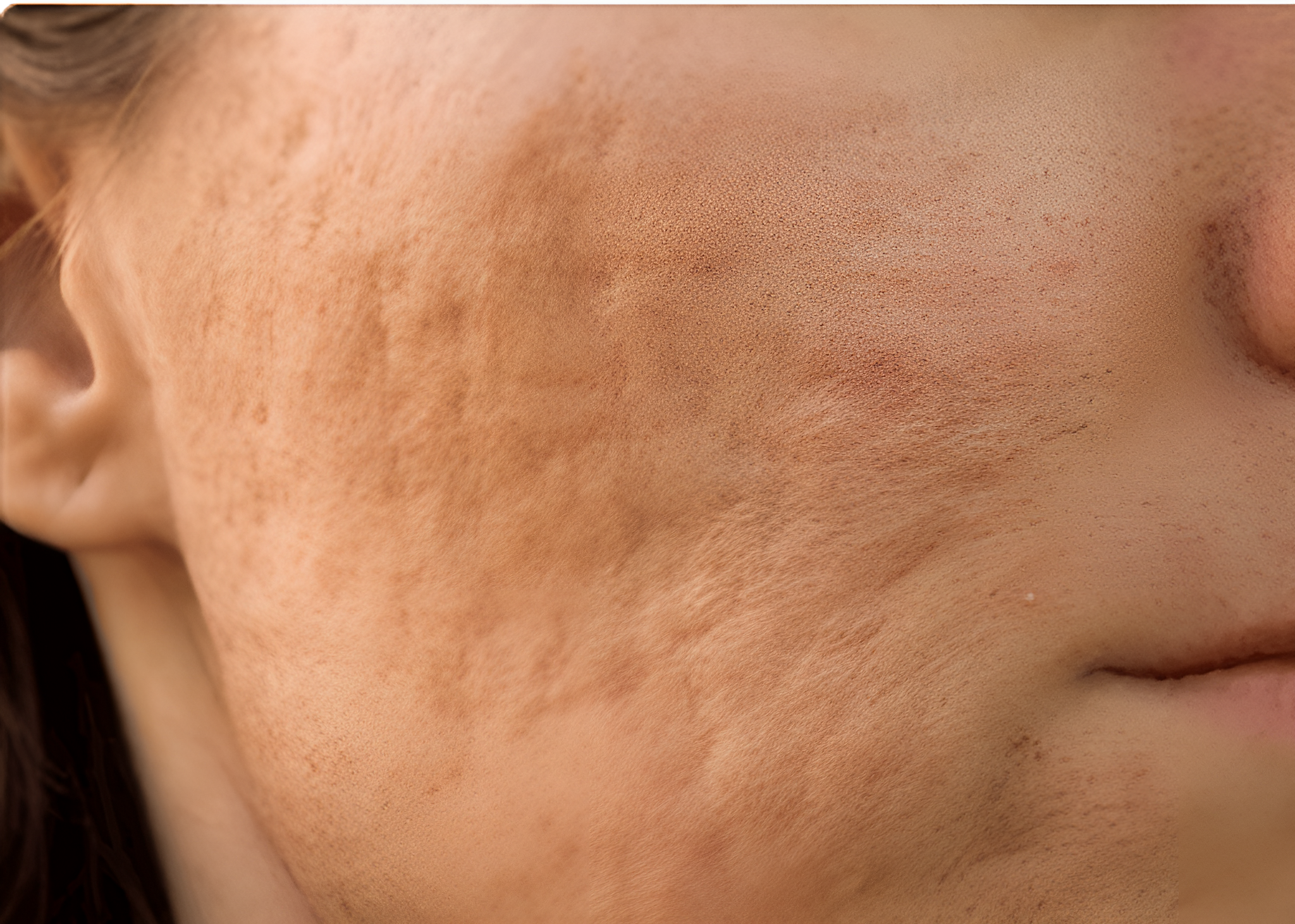One of the most challenging scars to remove are keloid scars. These raised, often itchy scars can grow beyond the original wound, making people who have them self-conscious.
Understanding their causes, symptoms, and various treatment options can help reduce their appearance.
What is a Keloid Scar?
A keloid scar is a raised scar that occurs due to the overgrowth of scar tissue at a healed skin injury. Unlike normal scars, keloid scars extend beyond the original wound and can grow over time.
They are characterised by their thick, raised appearance and are typically more pronounced than hypertrophic scars.
What Does a Keloid Scar Look Like?
As mentioned above, keloid scars appear to be raised, smooth, and shiny on the skin. Depending on the person’s skin colour, they can vary from pink to red or even dark brown. They often feel firm to the touch and sometimes tender, itchy, or even painful.
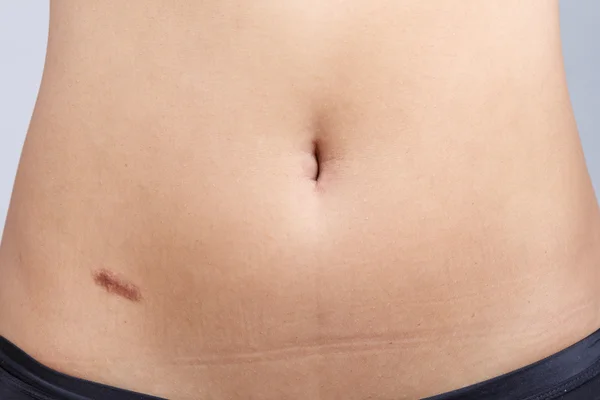
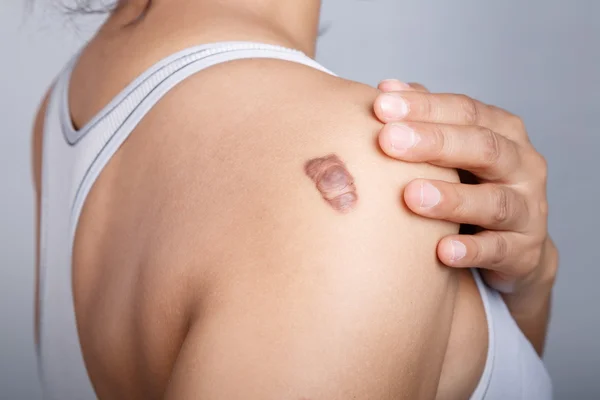

Where are Keloid Scars Commonly Found?
Keloid scars can grow anywhere on the body where there has been skin injury, but they are most commonly found in the following areas:
- Chest. Particularly common after the occurrence of acne scars or surgical procedures.
- Shoulders and upper arms. It often results from skin injuries or vaccinations.
- Ears. It is frequently seen after ear piercing, especially on the earlobes.
- Neck. It can develop from cuts, surgical incisions or acne scars.
- Back. Typically, they form after an acne breakout or from surgical incisions.
Causes of Keloid Scars
Keloid scarring occurs due to an overproduction of collagen during the wound-healing process. Different factors can increase the risk of developing keloid scar, including:
- Genetic component. A strong genetic predisposition can make some people more likely to develop keloids.
- Skin colour. Individuals with darker skin tones, such as brown or black skin, are more prone to keloid formation.
- Type of skin injury. Keloids can form after acne scars, surgical incisions, piercings, cuts, burns and even insect bites.
- Location of injury. Areas like the chest, shoulders and earlobes are more susceptible to keloid scars.
- Age. Younger individuals, especially those in their teens to early twenties, are more likely to develop keloids.
Early Signs and Symptoms of Keloid Scars
The early signs and symptoms of keloid scars include:
- Pain. You may feel pain in the affected area, especially as the keloid grows.
- Itching. Itchiness is a common early symptom, often indicating the start of keloid formation.
- Tenderness. The scar tissue can feel tender to the touch.
Treatment Options for Keloid Scars
Keloid scar removal can be challenging, but various treatment options are available to help reduce their size and appearance.
Corticosteroid Injections
Corticosteroid injections are one of the most common treatments for keloid scars. They work by reducing inflammation and slowing down collagen production, which helps to flatten the scar tissue.
Typically, multiple injections over several months are required for optimal results.
Laser Therapy
Laser therapy uses concentrated light beams to reduce the appearance of keloid scars. The laser treatment damages and shrinks the scar tissue’s blood vessels. Laser therapy can be particularly effective when combined with other treatments like corticosteroid injections.
Surgical Excision
Surgical excision involves cutting out the keloid scar. While this method can effectively remove the keloid, there is a high risk of recurrence, often in larger scars.
Combining surgery with other treatments like corticosteroid injections or radiation therapy can reduce the risk of the keloid returning.
Topical Treatments
Topical keloid scar treatments like silicone gel pads can help flatten and soften the scars. These products create a barrier that reduces collagen production, helping to improve the scar’s appearance over time.
They are often used in conjunction with other treatments for improved outcomes. They can also help ease itching as the wound heals.
How To Prevent Keloid Scars?
Avoid skin injuries
While we can’t avoid cuts and scrapes entirely, minimising skin injuries can help prevent keloid scars. Wearing protective gear during sports or activities that could result in cuts or abrasions can reduce the risk of developing keloids.
Conduct proper wound care
Proper wound care is important in preventing keloid scarring. Keeping wounds clean and covered promotes healthy wound healing and reduces the likelihood of excessive scar tissue formation. Basic wound care tips include:
- Clean the wound with mild soap and water immediately after a cut or abrasion.
- Apply an antiseptic to the affected area.
- Cover the wound with a sterile bandage to keep it moist and protect it from microbes.
Use silicone sheets or gel
Silicone sheets or gel prevent keloid scars by protecting the wound. These products help hydrate the skin and reduce excessive collagen production, which can minimise scar formation.
To use silicone gel sheets, apply them directly to the healed wound according to product instructions.
Protect the scar from sun exposure
Sun exposure can worsen scars by causing hyperpigmentation. That’s why protecting your scars from the sun by using any sunscreen and wearing protective clothing can help them heal more evenly. This is particularly important for fresh scars and those prone to keloid formation.
Monitor recent piercings
Recent piercings, especially ear piercings, can increase the risk of developing keloids. Regularly cleaning the piercing and avoiding trauma to the area can help prevent keloid formation.
Avoiding body piercings if you have a history of developing keloids is also advisable.
Consult with a professional
If you have a history of keloid scars or notice changes in your skin after an injury, consult with a professional immediately. Early treatment can help minimise the risk of keloid formation and ensure proper wound healing.
Are keloid scars dangerous?
Keloid scars are generally not dangerous to your overall health. However, they can cause discomfort, pain and itching. In some cases, large keloids can restrict movement, particularly if they are located near joints.
Can keloid scars recur after treatment?
Yes, keloid scars can recur after treatment. The rates of recurrence vary depending on the treatment methods used and individual factors. Combining treatments, such as surgical excision with corticosteroid injections, can reduce the likelihood of keloid scars recurring.
What is the difference between keloids and hypertrophic scars?
Keloid and hypertrophic scars are both raised scars, but have distinct differences. A keloid scar grows beyond the original wound boundary and can continue to enlarge over time.
In contrast, a hypertrophic scar remains confined to the original wound area and often flattens and sometimes fades over time. Hypertrophic scars are generally less challenging to treat than keloid scars.
Can keloid scars affect tattooed skin?
Tattooed skin is at risk of developing these scars, particularly in individuals prone to keloids. The trauma from the tattoo needle can trigger keloid formation. It’s essential to discuss this risk with a professional before getting a tattoo, especially if you have a history of keloids.
Can children get keloid scars?
Yes, children can develop keloid scars, particularly if they have a genetic predisposition. Parents should closely monitor any injuries or piercings and seek advice from a skin specialist if they notice any signs of keloid formation. Early treatment can help manage keloid scars in children effectively.
Conclusion
Keloid scars can be a significant concern for many individuals, but understanding their causes, symptoms, and different treatment options can help prevent and manage them effectively.
If you are concerned about keloid scars, consult a professional to explore the most suitable treatment options. Taking proactive steps to prevent keloids and seeking early treatment can improve skin health and well-being.
